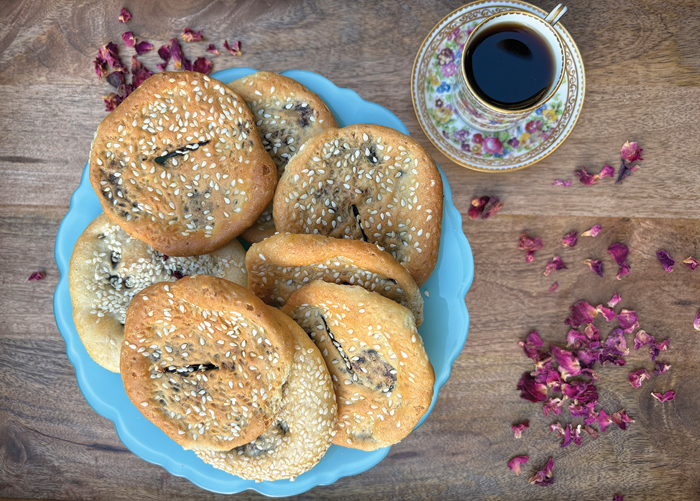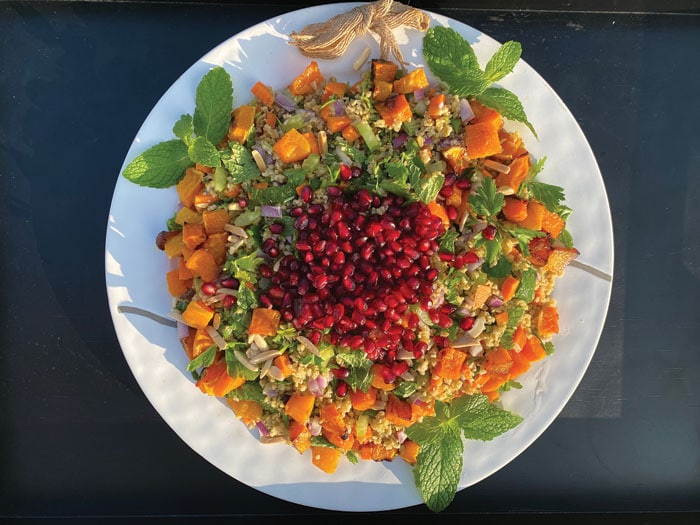Mouthwatering Mujadara
Lentils originated thousands of years ago in India, where they are still an important crop and an immensely popular source of protein.

The first time that Alan and I took my son Ariel out for dinner, we went to Grill Express on Fairfax Avenue in Los Angeles. It was our favorite kosher Israeli restaurant. Just as in Israel, they lined up the little bowls of pickles, olives and salatim on the table the moment you sat down. They served shwarma and pargiyot, falafel and sabich. On Thursday nights and Sundays, they served cholent, but they called it “chunt” just like in Israel. Grill Express is long gone, but that evening from twenty two years ago is forever etched in my memory.
My engagement to Alan was still two months in the future, but Alan and Ariel had already met and bonded.
I don’t remember what Alan and I ordered, but I remember that Ariel, 6 1/2 years old, proudly ordered steak kebab, mujadara and Israeli salad. I remember thinking, why kebab? Those chunks of meat are too dry! But I decided not to interfere with his choice. (Anyone who knows me, knows that this is most uncharacteristic of me.)
The food arrives and we are all happily eating. That is, until Ariel starts choking. Alan, who is sitting opposite me, has a look of complete terror on his face. The waitress is hovering helplessly and the entire restaurant has frozen in horror. I take my right hand and begin to stroke Ariel’s back in a circular motion. In a soothing voice I murmur “Just relax…..Everything is okay!”
Then I summoned all the strength I had in me and slapped his back. The way that piece of meat flew out of his mouth and across the table was almost comical. Relieved, the other diners returned to their meals. The story is a family legend, a fond memory of crisis averted.
Being Jewish is all about memory. This time every year, we remember the destruction of the the Holy Temple in Jerusalem on Tisha B’Av. First, Solomon’s Temple at the hands of the Babylonians, then the rebuilt Second Temple by the Romans. We remember our long exile from our homeland and the suffering experienced over the generations.
Being Jewish, we make it about the food. On the week preceding Tisha B’Av and the Seudah Mafseket before Tisha B’Av, it is traditional to eat lentils, a mourning food. Perfectly round and flat, legumes symbolize the cyclical nature of life and death. But they also symbolize fertility and rebirth. Amid the sadness of Tisha B’Av, we also pray for redemption from Exile.
Our Iraqi family tradition for the three weeks is to eat kitchri, a cumin and garlic flavored rice and lentil dish. It is a perfect meal served with plain yogurt or leben (labneh) and over the top greatness with a fried egg (and you can find the recipe on our website!).
—Sharon
Lentils originated thousands of years ago in India, where they are still an important crop and an immensely popular source of protein. From there the plant was domesticated in the Middle East and along with barley, lentils were an important part of the Biblical diet.
In my parent’s home, my mother always served lentil soup before the fast of Tisha B’Av. My mother made it with brown lentils, lots of sautéed onion, small chunks of carrots and delicately seasoned with salt and pepper and bay leaf. It’s still a family favorite whenever we feel like a hearty nutritious soup. The Rhodesli custom that I acquired through marriage to Neil was to serve Peshcado Frito (fried white fish) with stewed lentils served over rice.
Many years ago, when I started the Sephardic Spice SEC FOOD page on Facebook, I noticed many members posted mouthwatering pictures of mujadara around Tisha B’Av. So I decided to start making this nutritious staple of the Middle Eastern diet with my own spin.
Mujadara, which means “pockmarked” in Arabic, is made with three ingredients—brown lentils, rice and lots of onion.
Mujadara, which means “pockmarked” in Arabic, is made with three ingredients—brown lentils, rice and lots of onion. The traditional seasoning is salt, pepper, cumin and paprika. I can’t resist cooking the lentils and rice with bay leaf as well. But it’s the exquisitely thin and crispy sweet golden brown fried onion makes this dish a huge hit.
Ironically, this year Tisha B’Av falls on Shabbat and Sephardic Jews will never, ever serve lentils on Shabbat. So we’ll eat mujadara in the nine days. And we’ll make it other times during the year because it’s truly delicious.
—Rachel
Mujadara Recipe
2 1/2 cups brown or green lentils
1 cup long or short grain rice
1 teaspoon kosher salt
1/2 teaspoon white pepper
1 bay leaf
4 tablespoons extra virgin olive oil
5 onions, 3 finely chopped and 2 thinly
sliced
1 teaspoon cumin
1 teaspoon sweet paprika
- Rinse lentils, strain and place in a large pot. Add 5 cups of water and bring mixture to a boil. Reduce heat, cover the pot and allow to simmer for 15 minutes until the lentils are tender.
- Soak rice for 15 minutes, then rinse three times. Drain well.
Add rice to the pot of lentils and season with salt and pepper. Add 2 cups water and the bay leaf, then bring to a boil. - Reduce heat, cover the pot and cook until the rice is tender and the water has been absorbed, about 15 minutes.
- Allow the rice to rest in the covered pot for 15 minutes.
- In a large skillet, heat two tablespoons of olive oil over medium heat and fry the chopped onions until golden brown. Transfer to the pot of lentils and rice, add cumin and toss well to combine.
- In the same skillet, heat the remaining olive oil over medium heat and fry the sliced onions until caramelized, about 15 minutes. Then raise heat to high and crisp the onions for two minutes, until the onions are crispy.
Sharon Gomperts and Rachel Emquies Sheff have been friends since high school. The Sephardic Spice Girls project has grown from their collaboration on events for the Sephardic Educational Center in Jerusalem. Follow them on Instagram @sephardicspicegirls and on Facebook at Sephardic Spice SEC Food.






